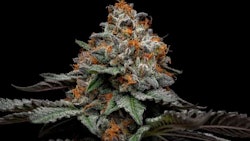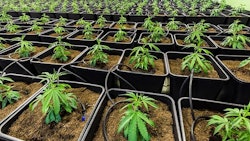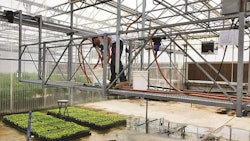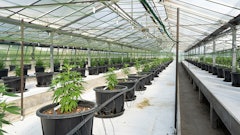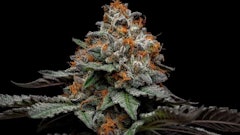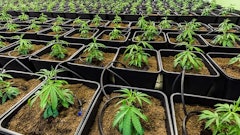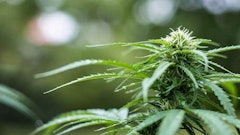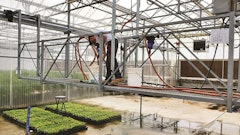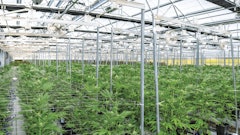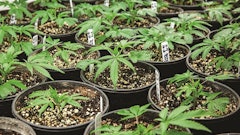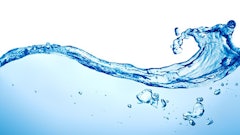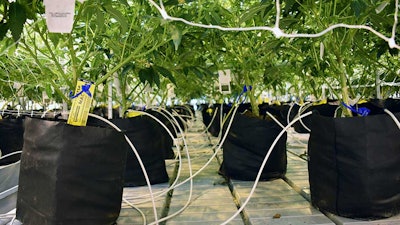
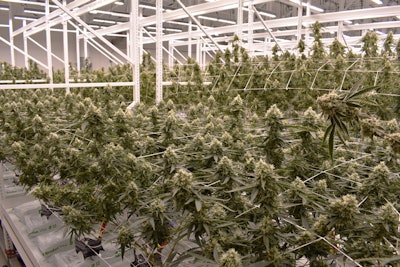
Fertilization is the process of providing nutrients and soil amendments to plants to stimulate growth and healthy productivity. Irrigation is the process by which water is delivered to crops at specific intervals. Fertigation, then, is the combination of both processes into a single step.
At first glance, these processes can seem straightforward: Feed a plant nutrients and water, and watch it grow. But nothing in life is that simple, and cannabis growers must ask themselves a flurry of questions about how to best deliver those essential inputs. Two of the top questions for cultivators to consider before installing or upgrading fertigation systems and protocols are:
- Should I automate my irrigation and fertigation systems or hand-water and feed?
- Should I use water storage tanks or direct-feed my plants via nutrient-dosing meters?
Let’s explore the factors that might influence the answers to these questions for most cannabis cultivation operations.
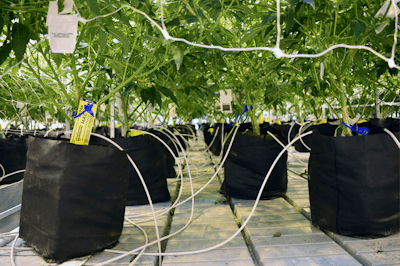
Fertigation: By Hand or Automate?
In my more than 40 years of experience in cannabis, I’ve found 10,000 sq. ft. of canopy is the magic number when considering automating water and nutrient delivery systems, meaning that any canopy over 10,000 sq. ft. is most productive and efficient if it has automated fertigation. However, every grow is different and has its own unique goals and constraints.
With an educated and knowledgeable plant technician hand-watering and mixing, there can be more control over how much water and nutrient solution individual plants receive. In other words, hand-watering and feeding can make it easier to give the plant exactly what it wants, exactly when it wants it.
The plant that needs water will suffer stress if not watered properly (or worse if the media is allowed to dry out). Conversely, the plant that does not require water risks becoming oversaturated, giving it little to no time to process all available water between cycles. Overwatering causes many other potential problems such as lethargic growth, pythium, root rot, disease susceptibility, among other issues. A properly grown plant requires a media “dry back” or breaks between cycles of water.
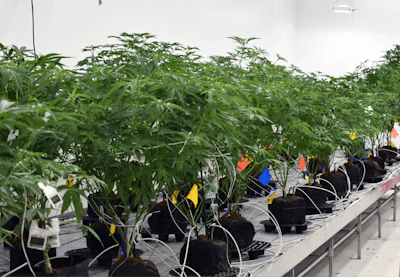
Accommodating the needs of both the dry plant media requiring water and the semi-saturated plant media that does not require water is essential, whether watering by hand or automating. With hand-watering, technicians can touch the media to see how saturated it is or lift the plant/pot and feel its weight. They also can visually inspect many aspects of the plant and its health while determining the plant’s water and nutrient needs and identify any signs of deficiencies. But it takes a lot of time and expertise.
However, utilizing fertigation systems to deliver nutrients can be a more precise way to make sure plants get the required amount of nutrient solution without utilizing more than necessary, saving on water and nutrient costs.
The decision to hand-water or automate irrigation typically comes down to cost and where owners want to invest their resources. Costs vary depending on facility size and other factors. According to an article published in 2018 in Cannabis Business Times, nonprogrammable fertigation systems range from $5,000 to $10,000. Systems with multi-feed injection systems and a centralized operating system can run about $80,000, though costs vary. Hand-watering plants and hand-mixing nutrients in facilities much larger than 10,000 sq. ft. is very labor-intensive, and often is an inefficient use of labor, as skilled employees must complete arguably mundane tasks and inevitably work some special holidays because plants don’t observe federal, state, and/or religious holidays.
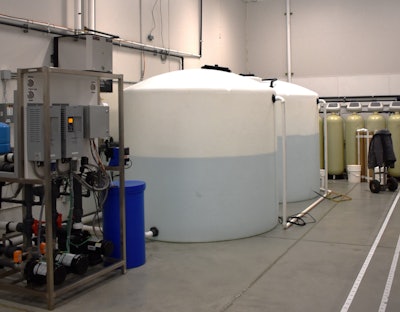
There are many advantages to automated fertigation systems: time savings, labor cost savings, uniformly irrigating/feeding large areas, and complete control of many parameters. Most often, the benefits of an automated fertigation system outweigh any downsides.
Yet automated fertigation systems also have limitations, more specifically regarding the use of organic fertilizers and/or amendments. Some organic fertilizers and amendments may be incompatible with drip irrigation systems. When using automated irrigation or fertigation, it is recommended that any organic amendments be added on top of the plant medium, followed by hand watering, or that they be incorporated into the water prior to hand watering, rather than ran through the fertigation lines.
Even with an automated fertigation system, it is good practice to examine lines regularly to check for clogs, leaks, and prevent any nutrient/salt buildup or lockout caused by antagonistic effects. Automation can save time and labor, but human expertise is still critical to effective operations.
There are many mitigating factors regarding exactly how much and when to water. Suffice it to say plants do not like to be overwatered or underwatered, they like it just right; the key is to find the sweet spot that allows you to fine-tune the timing and duration to maximize each plant’s potential.
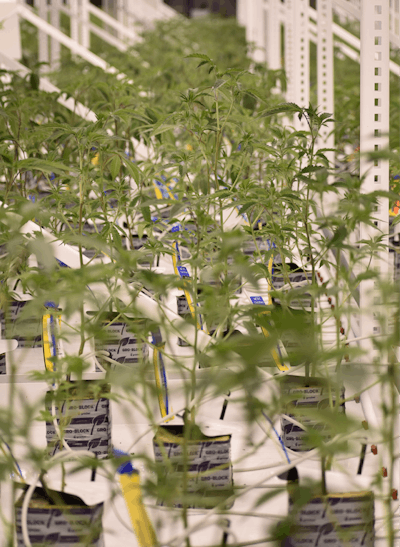
Storage Tanks or Direct-Delivery Systems?
Nutrient/water storage tanks collect water that has been filtered, sterilized, and oxygenated. Water is taken from the tanks and fed to crops via dosing meters and drippers.
Direct delivery via dosing meters take the incoming water feed (typically from a municipal line) through a series of filtration, sterilization and oxygenation units before releasing the water toward dosing meters and drippers for application.
There are multiple mitigating factors regarding the choice between the two, and space is usually the first consideration. Growers should aim to keep as much water in storage tanks as physically possible, but the bare minimum amount of water to keep is about one-day’s worth.
If there is no space for large storage tanks or the supplemental equipment required to maintain them, the conversation is moot, and direct-delivery systems are the only option.
Beyond space requirements, there are many other factors to consider when evaluating the potential of using a water storage tank:
- Water temperature control in reservoirs: Being able to control the temperature of irrigation water is essential. Operations using storage tanks likely will need both water heaters and chillers designed for horticultural use. Water holds more oxygen at cooler temperatures, but water that is too cold can harm plant development, whereas hotter water is a breeding ground for bacteria. Aim for a water temperature between 60 and 70 degrees Fahrenheit.
- pH control: The pH of water or a nutrient solution must be stabilized prior to application. Apply pH adjustment products (those used to raise or lower pH to get to desired levels) using a dosing meter or by hand.
- Filtration: Reverse osmosis filtration is advised for all incoming water into the reservoir.
- Sterilization: UV light sterilization is also a must for all incoming water into the reservoir. Never neglect cleaning and sterilizing reservoirs as bacteria, pythium, and root rot can rapidly develop in them and spread through an entire facility. Clean and sterilize the complete irrigation system between crop cycles, and check for clogged irrigation lines and drippers when doing so.
- Consider nanobubble technology: A nanobubble generator is utilized for reservoir oxygenation. It utilizes tiny bubbles to saturate water with oxygen so that they stay suspended in water longer so they can be delivered through irrigation lines to the plants. Dissolved oxygen (DO) produces oxidants and reduces surface tension, which aids nutrient uptake. It can also have a beneficial impact on suppressing pathogens and for algae and biofilm control.
Because of drought conditions in multiple geographic locations, water for agriculture is at a premium, and I suspect things will get worse before they get better. Therefore, it makes ecological sense to recycle, reuse, store, and smartly deliver the water you utilize whenever possible.
Kenneth Morrow is an author, consultant and owner of Trichome Technologies. Facebook: TrichomeTechnologies Instagram: Trichome Technologies [email protected]









